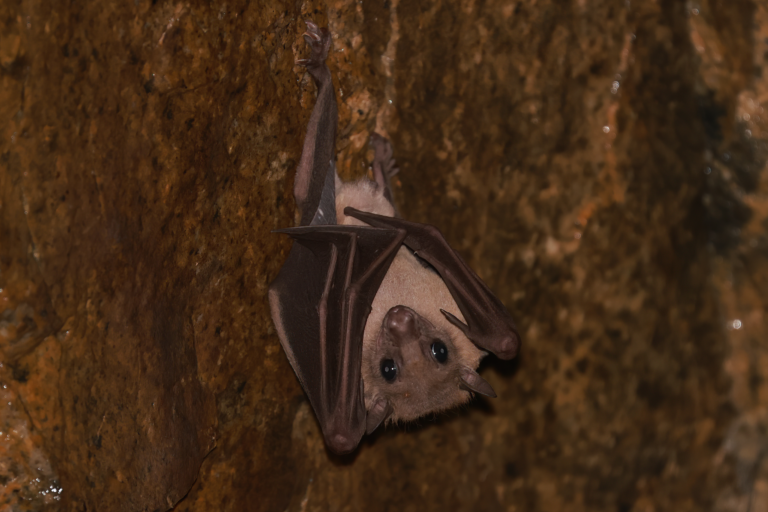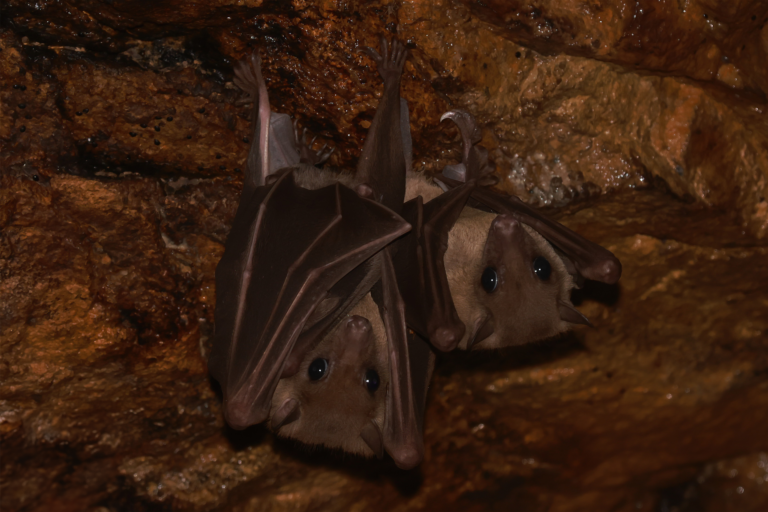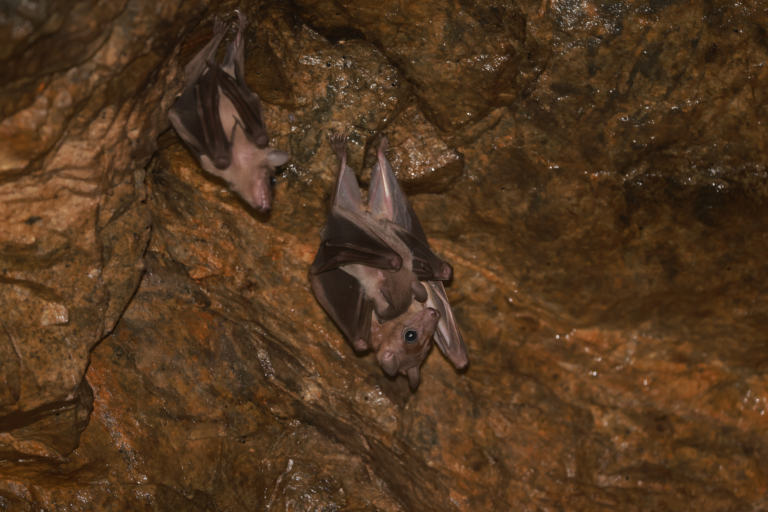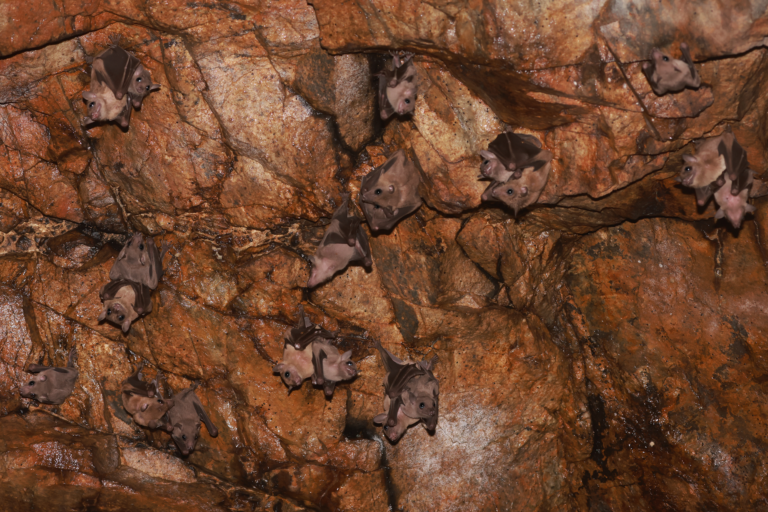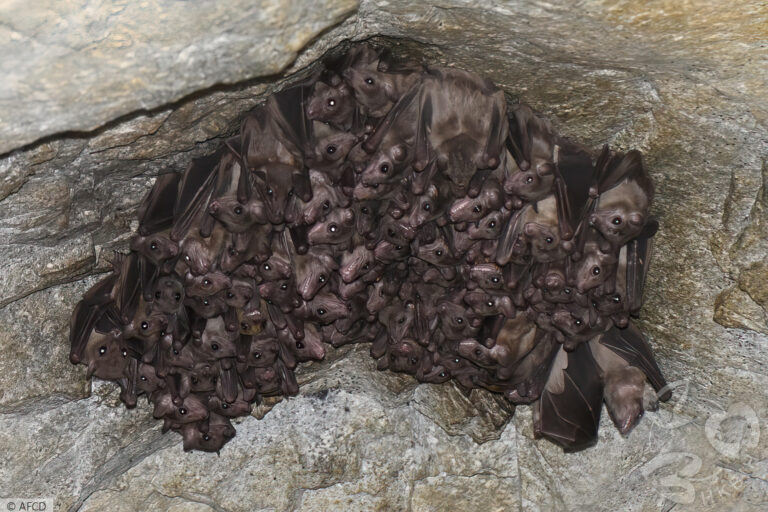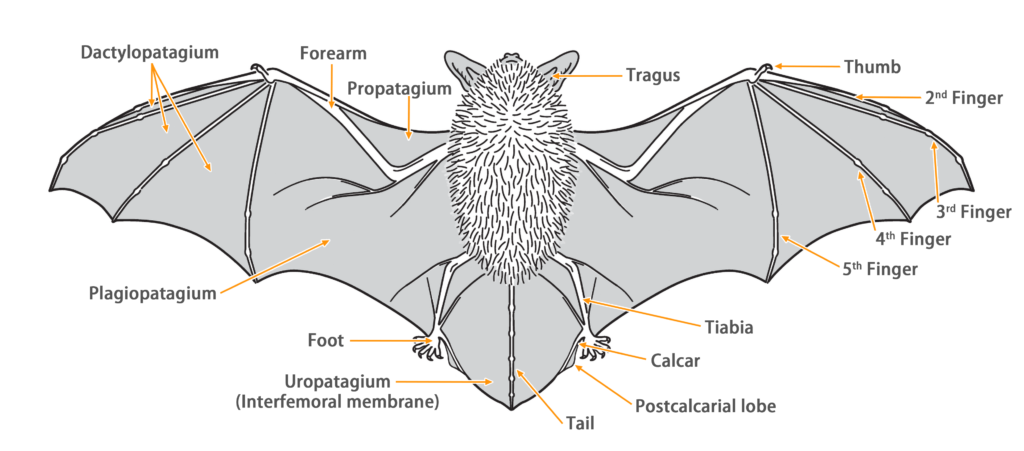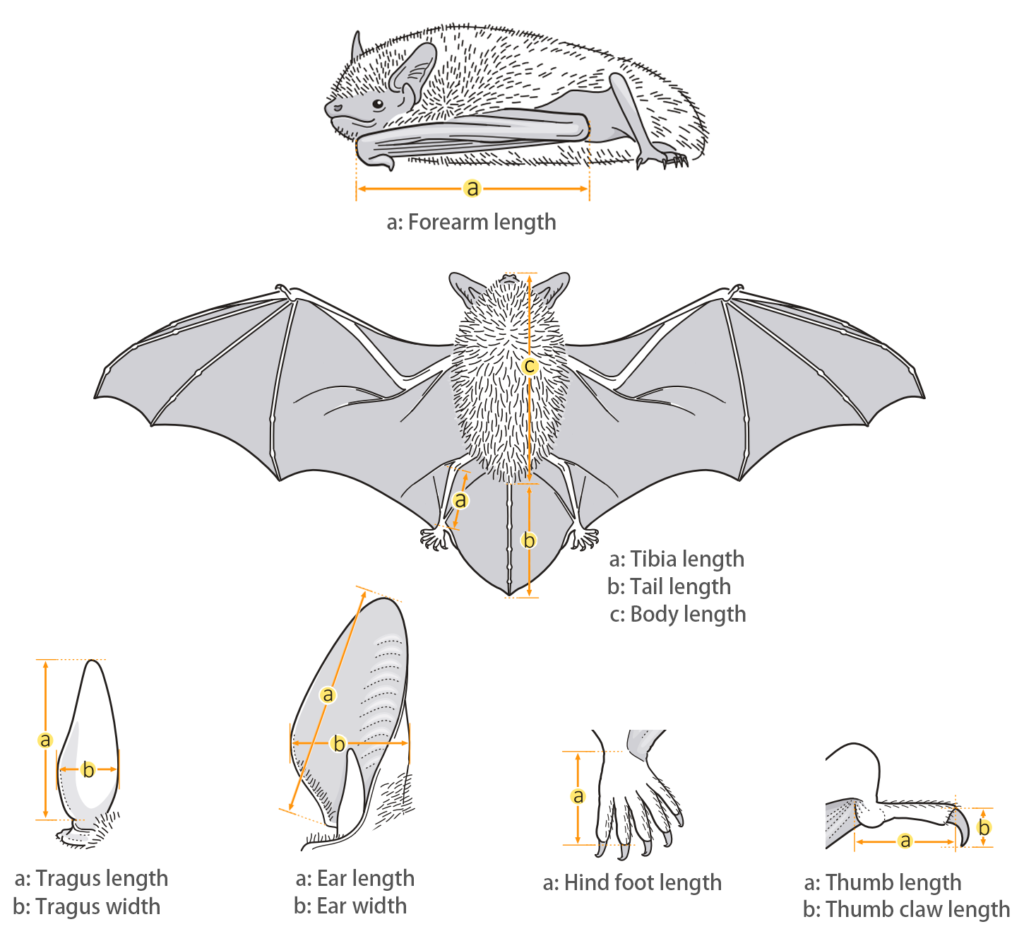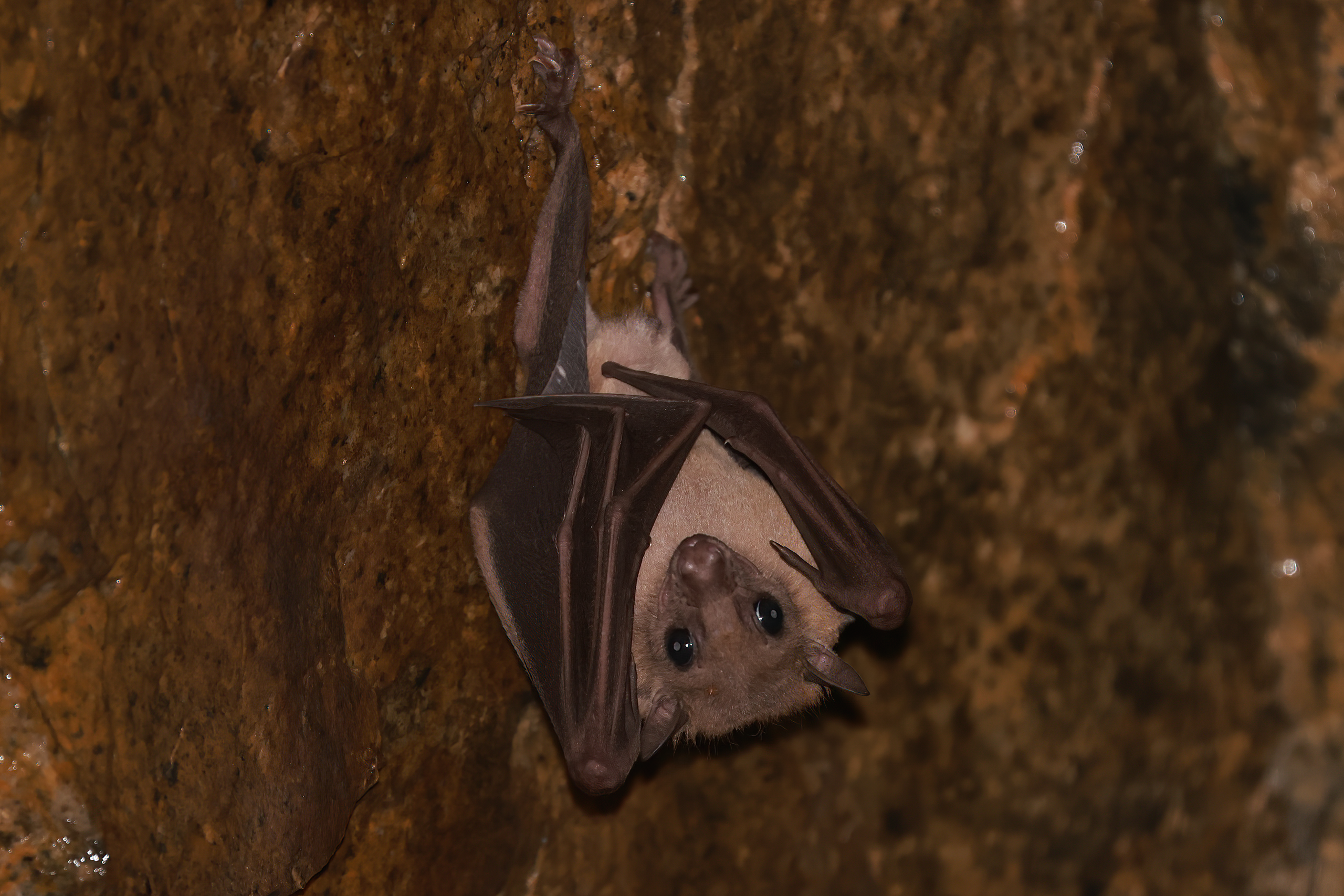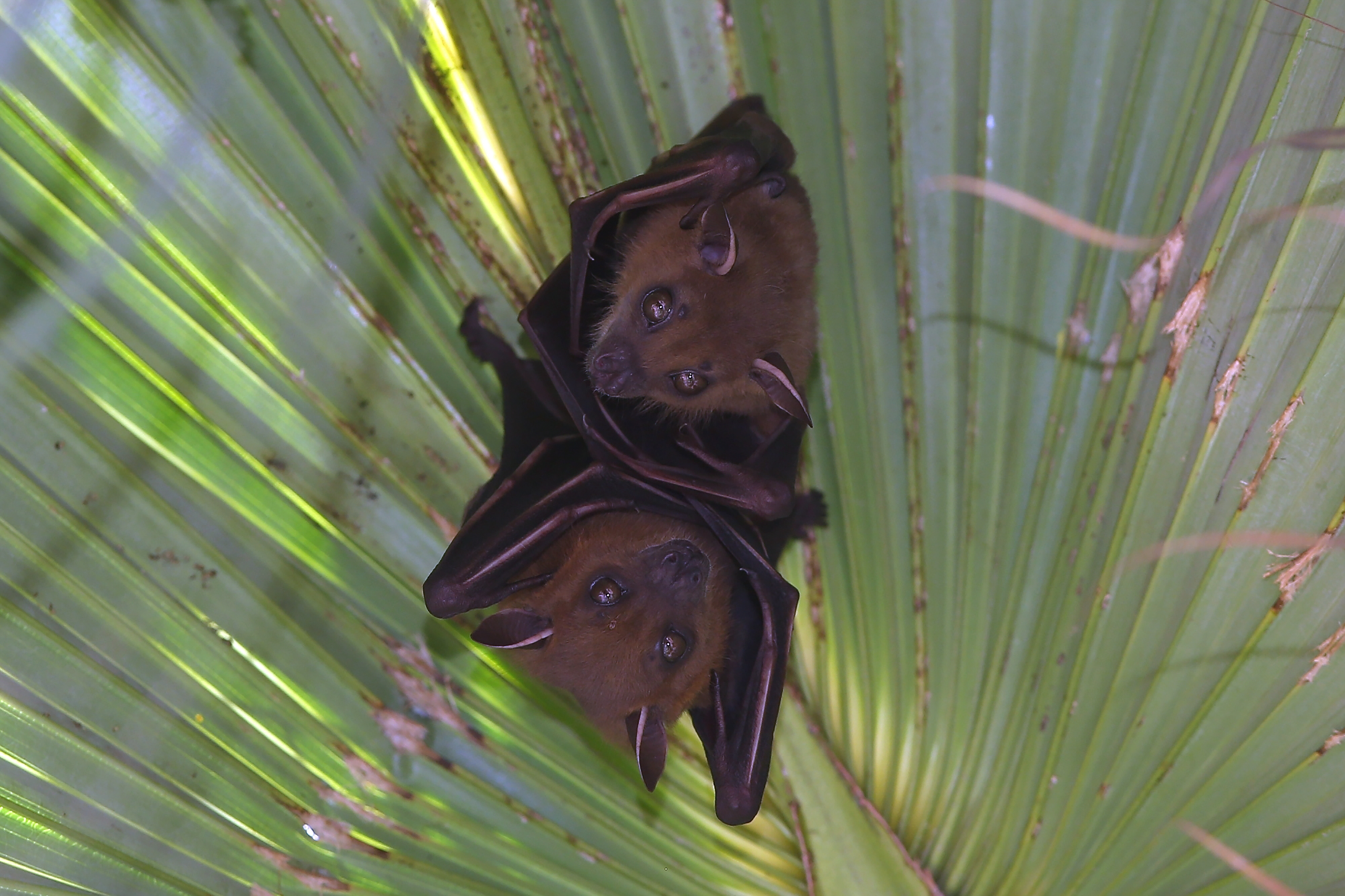- Hong Kong Bat Radar
- Leschenault’s Rousette (Rousettus leschenaultii)
Leschenault's Rousette
Rousettus leschenaultii (Desmarest, 1820)
Taxonomy
| Family: | Pteropodidae |
| Genus: | Rousettus |
| Scientific name: | Rousettus leschenaultii (Desmarest, 1820) |
| Synonyms: |
Eleutherura fusca  Gray, 1870 Pteropus leschenaultii  Desmarest, 1820 Rousettus shortridgei  Thomas & Wroughton, 1909 Xantharpyia seminuda  Gray, 1870 |
| Common name: | Leschenault's Rousette |
| Other name: | Fulvous Fruit Bat, Brown Rousette |
| Remark: | This species comprises three known subspecies: R. l. leschenaultii (Desmarest, 1820), R. l. seminudus (E. Gray, 1870) and R. l. shortridgei (Thomas & Wroughton, 1909). Based on geographic distribution, the Leschenault's Rousettus in Hong Kong belongs to the subspecies R. l. leschenaultii. |
| Characteristics | |
| Color: | The pelage is smooth and soft, with a uniform gray-brown color on the dorsal side. The neck, back, and ventral fur are relatively lighter, ranging from light gray-brown to tea-yellow. Juvenile bats have a darker overall fur color, appearing as gray-black. |
| Ear: | The ear pinna is large, with a smooth rounded outer edge and a pointed tip. There are no tragus or antitragus present. The ear pinna and edge are both dark brown in color. |
| Head: | The facial features resemble those of a dog, with large and prominent eyes, and a long and narrow snout. |
| Limbs: | The phalanges on the wing membrane are lighter in color, exhibiting a dark pinkish hue. The wing membrane connects to the middle part of the toes. |
| Tail: | The tail is extremely short, with a very narrow interfemoral membrane. Half of the tail extends beyond the interfemoral membrane. |
| Other: | During the breeding season, females have prominent nipples located below each armpit, while males have a noticeably enlarged scrotum during the mating period. |
| Body measurements | |
| Size: | Large Fruit bat |
| Body: | 80.0 - 125.0 mm |
| Tail: | 13.0 - 17.5 mm |
| Ears: | 17.0 - 24.0 mm |
| Hind foot: | 17.0 - 23.5 mm |
| Forearm: | 77.0 - 96.3 mm |
| Weight: | 40.0 - 92.5 g |
| Wing morphology | |
| Wing span: | 0.530 m |
| Wing area: | 0.049 m2 |
| Wing loading: | 20.87 ± 2.62 N/m2 (High) |
| Aspect ratio: | 5.81 ± 0.30 (Low) |
| Tip-shape index: | 0.86 ± 0.24 (Low) |
| Reference: | Furey & Racey, 2016 |
Ecology
| Habitat: | The Leschenault's Rousette typically inhabits caves in countryside, including drainage channels, abandoned mines, and sea caves. They generally choose locations near damp and dimly lit areas or near cave entrances for roosting. Additionally, there have been occasional records of temporary roosting in urban buildings. |
| Habit: | As a colony-dwelling fruit bat, the size of local colonies can vary greatly, ranging from a few individuals to several thousand. The largest recorded colony in the local area consisted of over 6,000 individuals (in October 2004 at Kau To Shan drainage channel). They prefer to cluster in recessed areas on the cave ceiling and leave behind dark brown stains. |
| Reproduction: | The breeding season occurs in spring (May to June) and summer (August to September), although the actual timing can vary due to factors such as temperature and food resources. The birthing time among individuals within the same roost can differ by several weeks. In Yunnan province, they have year-round breeding activity, with a peak in production between March and May. During the breeding season, females disperse to separate roosts within their original habitat for birthing and rearing offspring but do not stray too far from the main colony. |
| Hibernation: | They are active throughout the year and do not hibernate. |
| Flight: | Although their flight efficiency, agility, and hovering capabilities are relatively poor, Leschenault's Rousette has a high wing loading, excellent flight ability, and speed, making them well-suited for long-distance flights. They generally navigate along forest paths or near the canopy layer, preferring to fly above the canopy (>3.5 meters). |
| Foraging: | Typically, approximately half an hour after sunset, they begin to leave their roosts for foraging and activity. During the night, they exhibit three peaks of foraging activity, each lasting for about half to one hour, although the actual timing may vary depending on the season. Generally, there are two foraging peaks before dawn, separated by one hour, and a final peak after dawn. They typically fly directly to different foraging areas and can move between them as needed, but they do not shuttle back and forth between foraging areas and the roost. The distance between foraging areas and the roost can extend up to 10 km. The foraging areas can vary among individuals but may overlap. |
| Diet: | As herbivorous bats, Leschenault's Rousette feeds on a variety of plant materials, including fruits (such as figs, lychees, and longans), floral nectar (such as Bombax ceiba), leaves (such as Ficus altissima and Toddalia asiatica), and stems (such as sugarcane). They consume both ripe and unripe fruits, focusing on fully developed ones. Fruits provide abundant carbohydrates such as fructose, while leaves offer essential minerals such as calcium, potassium, and phosphorus. Considering their tongue, which can extend beyond 40 mm, floral nectar is also presumed to be an important food source. Leschenault's Rousette has a broad range of plant species in its diet, and a summary of its dietary survey is provided below: |
| Plant species/genus | Food |
|---|---|
| Bombax ceiba | Nectar |
| Carica papaya | Fruit |
| Citrullus lanatus | Fruit |
| Coccinia grandis | Fruit |
| Dimocarous longan | Fruit |
| Ficus microcarpa | Fruit |
| F. hispida | Fruit |
| Litchi chinensis | Fruit |
| Lycopersicon esculentum | Fruit |
| Mangifera indica | Fruit |
| Manilkara zapota | Fruit |
| Melia azedarach | Fruit |
| Musa acuminata | Fruit |
| M. balbisiana | Fruit |
| Psidium guajava | Fruit |
| Randia spinosa | Fruit |
| Rhodomyrtus tomentosa | Fruit |
| Solanum surattense | Fruit |
| S. verbascifolium | Fruit |
| Saccharum officinarum | Stem |
| Terminalia catappa | Fruit |
Diet composition of R. leschenaultii in Xishuangbanna, China (Tang et al., 2005)
| Plant species/genus | Food |
|---|---|
| Annona squamosa | Fruit |
| Carcinia oblongifolia | Fruit |
| Carica papaya | Fruit |
| Melia azedarach | Fruit |
| Ficus hispida | Fruit |
| F. benjamina | Fruit |
| F. auriculate | Fruit |
| F. altissima | Leaf |
| Psidium guajava | Fruit |
| Rubus hainanensis | Fruit |
| Saccharum officinarum | Stem |
| Solanum procumbens | Fruit |
| Terminalia catappa | Fruit |
| Toddalia asiatica | Leaf |
Diet composition of R. leschenaultii in Hainan Island, China (Zhong et al., 2007)
| Plant species/genus | Food |
|---|---|
| Achras sapota | Fruit |
| Anacardium occidentale | Fruit |
| Lannea coromandelica | Fruit |
| Annona reticulata | Fruit |
| A. squamosa | Fruit |
| Azadirachta indica | Fruit |
| Bassia latifolia | Fruit/Flower |
| Borassus flabellifer | Fruit |
| Calophyllum inophyllum | Fruit |
| Ceiba pentandra | Flower |
| Carica papaya | Fruit |
| Guazuma tomentosa | Fruit |
| Ficus benghalensis | Fruit |
| F. reticulata | Fruit |
| F. religiosa | Fruit |
| Mangifera indica | Fruit |
| Muntingia calabura | Fruit |
| Musa paradisiaca | Fruit/Nectar |
| Pithecellobium dulce | Fruit |
| Polyalthia latifolia | Fruit |
| P. longifolia | Fruit |
| Prosopis juliflora | Fruit |
| Psidium guajava | Fruit |
| Punica granatum | Fruit |
| Syzygium cumini | Fruit |
| Terminalia catappa | Fruit |
| Vitis vinifera | Fruit |
Diet composition of R. leschenaultii in India (Sudhakaran & Doss, 2012)
Distribution
| Local: | The New Territory, Hong Kong Island, Lantau Island and Mobile Islands |
| Global: | |
| R. l. leschenaultii : | Pakistan, India, Nepal, Bhutan, Bangladesh, Myanmar, Thailand, Laos, Vietnam, Cambodia, South China, and coastal Islands, including Hainan Island. |
| R. l. seminudus : | SriLanka |
| R. l. shortridgei : | Sumatra (including Simeulue Island), Java, Bali, and Lombok Islands. (Giannini et al., 2019) |
Local distribution map

Global distribution map
(Giannini et al., 2019)
Status and Conservation
| First record: | 1876 |
| Origin: | Native |
| Local status: | Common (Shek & Chan, 2006) |
| National status: | Least Concern (Red List of China Vertebrates) |
| Global status: | Near Threatened (IUCN Red List) |
| Potential threat: | TBC |
Echolocation
| Parameter | Value |
|---|---|
| Call structure | FM (Double clicks) |
| Duration | 1.61 ± 0.02 ms |
| Between clicks interval | 95.66 ± 7.05 ms |
| Within clicks interval | 25.46 ± 2.30 ms |
| 1st Peak frequency | 18.76 ± 0.62 kHz |
| 2nd Peak frequency | 30.82 ± 0.99 kHz |
|
Subspecies: |
R. l. leschenaultii |
|
Region: |
India |
| Method: | Flight tent |
| Reference: | Raghuram et al., 2007 |
| Parameter | Value |
|---|---|
| Call structure | FM (Double clicks) |
| Duration | 1.90 ± 0.89 ms |
| Peak frequency | 23.29 ± 6.29 kHz |
| Start frequency | 60.40 ± 22.01 kHz |
| End frequency | 13.48 ± 1.80 kHz |
| Bandwidth | 46.93 ± 22.2 kHz |
|
Subspecies: |
R. l. leschenaultii |
|
Region: |
India |
| Method: | Hand release |
| Reference: | Wordley et al., 2014 |
|
Caution: |
The values of echolocation call are derived from recording taken after human intervention. As such, the values obtained may not accurately represent those emitted by the bat species in natural status, and may deviate considerably. Furthermore, the acoustic characteristics of a given species may also vary depending on geographic location. Therefore, in order to accurately identify bat species through acoustic analysis, identification should be based on the acoustic characteristics of neighboring regions or local populations. |
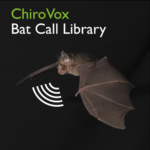
Similar Species
Leschenault's Rousette
Rousettus leschenaultii
Size:
Relatively larger.
Fur:
Lighter in color, appearing as grayish-brown.
Muzzle:
Relatively elongated.
Ears:
No white borders on the edge.
Limbs:
The phalanges on the wing membrane are darker in color.
Habitat:
Typically inhabits caves, such as water channels, mine tunnels, and sea caves.
Vocalization:
Emits audible "click-click" sounds using its tongue.
Short-nosed Fruit Bat
Cynopterus sphinx
Size:
Relatively smaller.
Fur:
Darker in color, appearing as deep brown, with a yellow-brown collar around the neck.
Muzzle:
Relatively shorter.
Ears:
Noticeable white borders on the edge.
Limbs:
The phalanges on the wing membrane are lighter in color, exhibiting a dark pink hue.
Habitat:
Typically nests and resides beneath the leaves of Hibiscus or Bauhinia plants.
Vocalization:
Don't use tongue clicks for echolocation.
Bibliography
Furey, N. M., & Racey, P. A. (2016). Can wing morphology inform conservation priorities for Southeast Asian cave bats?. Biotropica, 48(4), 545-556.
Giannini, N., Burgin, C., Cakenberghe, V. V., Tsang, S., Hintsche, S., Lavery, T., Bonaccorso, F., Almeida, F., & O’Toole, B. (2019). Pteropodidae. In Mittermeier, R. A., & Wilson, D. E. (Eds.), Handbook of the Mammals of the World – Volume 9 Bats. (pp. 16-162). Lynx Edicions.
Jiang, Z. G., Jiang, J. P., Wang, Y. Z., Zhang, E., Zhang, Y. Y., Li, L. L., Xie, F., Cai, B., Cao, L., Zheng, G. M., Dong, L., Zhang, Z. W., Ding, P., Luo, Z. H., Ding, C. Q., Ma, Z. J., Tang, S. H., Cao, W. X., Li, C. W., Hu, H. J., Ma, Y., Wu, Y., Wang, Y. X., Zhou, K. Y., Liu, S. Y., Chen, Y. Y., Li, J. T., Feng, Z. J., Wang, Y., Wang, B., Li, C., Song, X. L., Cai, L., Zang, C. X., Zeng, Y., Meng, Z. B., Fang, H. X., & Ping, X. G. (2016). Red List of China’s Vertebrates. Biodiversity Science 24(5), 500‑551.
Raghuram, H., Gopukumar, N., & Sripathi, K. (2007). Presence of single as well as double clicks in the echolocation signals of a fruit bat, Rousettus leschenaulti (Chiroptera: Pteropodidae). Folia zoologica, 56(1), 33.
Shek, C. T. (2006). A Field Guide to the Terrestrial Mammals of Hong Kong. Friends of country park and cosmos book limited.
Shek, C. T. & Chan, C. S. M. (2005). Roost Censuses of Cave Dwelling Bats of Hong Kong. Hong Kong Biodiversity, 10, 1-8.
Sudhakaran, M. R., & Doss, P. S. (2012). Food and foraging preferences of three pteropodid bats in southern India. Journal of Threatened Taxa, 2295-2303.
Tang, Z. H., Sheng, L. X., Cao, M., Liang, B., & Zhang, S. Y. (2005). Diet of Cynopterus sphinx and Rousettus leschenaulti in Xishuangbanna. Acta Theriologica Sinica, 25(4), 367-372.
Thong, V. D., Denzinger, A., Sang, N. V., Huyen, N. T. T., Thanh, H. T., Loi, D. N., Nha, P. V., Viet, N. V., Tien, P. D., Tuanmu, M.-N., Huang, J. C.-C., Thongphachanh, L., Luong, N. T., & Schnitzler, H. U. (2021). Bat Diversity in Cat Ba Biosphere Reserve, Northeastern Vietnam, A Review with New Records from Mangrove Ecosystem. Diversity, 13(8), 376.
Wordley, C. F., Foui, E. K., Mudappa, D., Sankaran, M., & Altringham, J. D. (2014). Acoustic identification of bats in the southern Western Ghats, India. Acta Chiropterologica, 16(1), 213-222.
Zhong, C., Yihang, M., Feng, Z., & Yuchun, L. (2007). Activity rhythms and food habits of Leschenault’s rousette (Rousettus leschenaulti) in Hainan Island. Acta Theriologica Sinica, 27(2), 112-119.
Hong Kong Bat Radar. (20/10/2024). A Field Guide to Bats of Hong Kong: Leschenault’s Rousette (Rousettus leschenaultii ). https://hkbatradar.com/en/rousettus_leschenaultii
